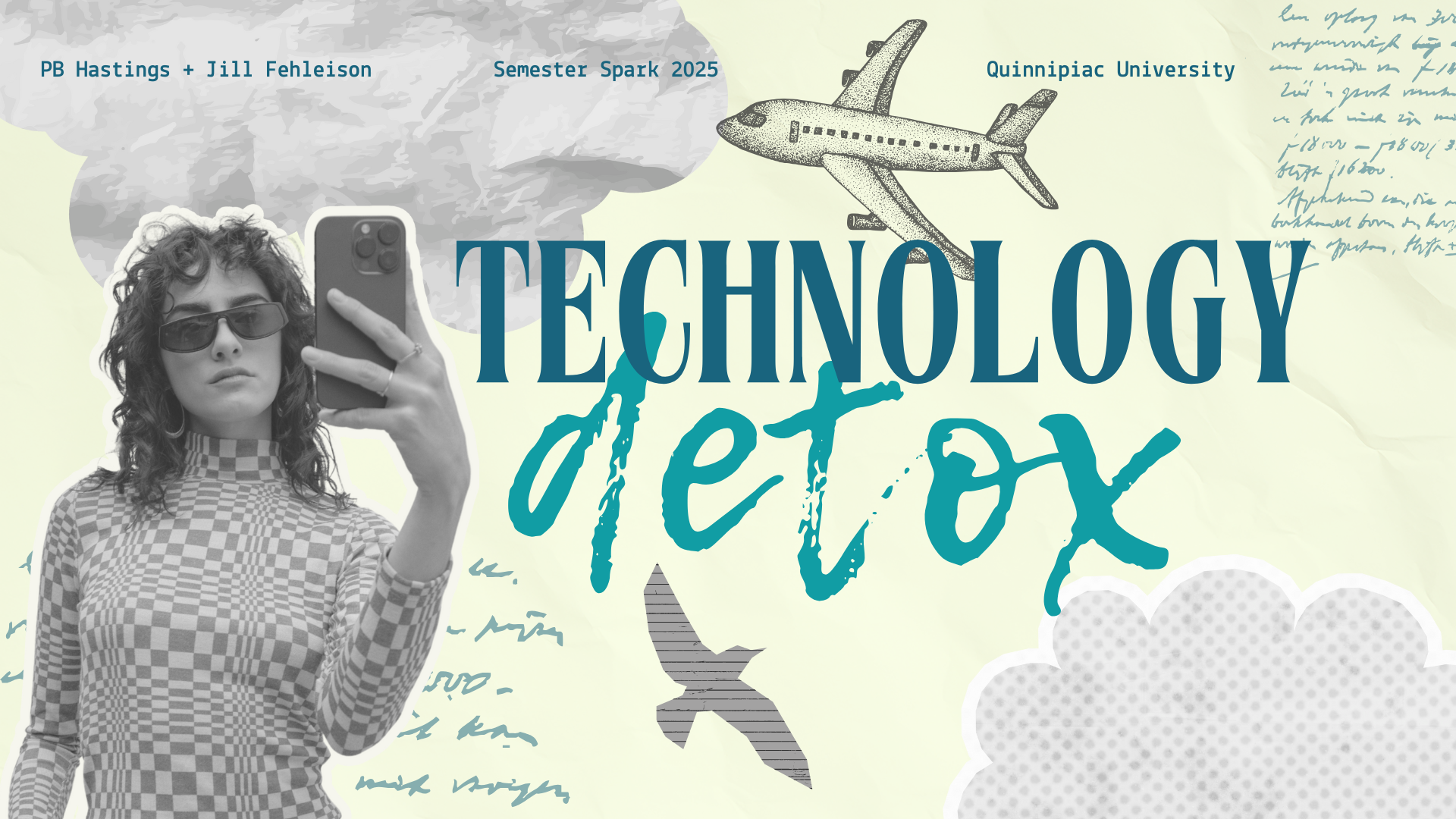Tech Addiction in Class
I recently co-led a Technology Detox Workshop for faculty at Quinnipiac University. The goal wasn’t just to talk about student tech use; it was to open a compassionate, collaborative conversation about the digital challenges we all face and to begin experimenting with solutions.
We started with a metaphor: “The plane is going down.” Technology isn’t just a distraction. It’s designed to hijack attention. Infinite scroll, autoplay, push notifications, and variable rewards exploit our psychological vulnerabilities. Add AI into the mix, and the turbulence gets even stronger.
Faculty quickly identified patterns in their classrooms and lives:
Students are distracted and fatigued, constantly tethered to their phones.
Many are afraid of mistakes and over-rely on AI to “get it right.”
Writing often resembles texting: emojis, no punctuation, fragmented thoughts.
Assignments are late, group work is resisted, and interpersonal skills are waning.
Despite being “digital natives,” students often consume far more than they create.
Sound familiar?
Rather than stopping at frustration, we reframed each challenge as an experiment:
Phone Distraction
Create “phone parking lots” or visible storage during class.
Build in short “tech breaks” to reduce FOMO.
Begin each session with a grounding mindfulness pause.
Fear of Mistakes / AI Dependence
Reframe assignments as “draft-first, revise-later.”
Encourage transparency: let students document how AI was used.
Run “failure labs” where the goal is to make and discuss mistakes.
Writing Like Text Messages
Assign “translation tasks”: turn a text into an academic paragraph.
Explicitly teach code-switching between informal and formal writing.
Gamify writing improvement—points for the best punctuation rescue.
Resistance to Group Work
Scaffold small, low-stakes collaborations first.
Rotate team roles (note-taker, facilitator, presenter).
Debrief teamwork to reflect on strengths and struggles.
Weak Communication & Interpersonal Skills
Practice “conversation labs” and role-play interviews.
Require short voice memos or video reflections.
Use improv-style warmups to reduce speaking anxiety.
Across all of these, the theme is clear: awareness, compassion, and experimentation. We can’t simply ban or shame technology use. We have to create environments that invite presence, creativity, and connection.
Moving Forward
Faculty left the workshop with personal action plans and accountability partners. Small steps: a screen-free ritual, a new class policy, a peer support buddy. All of it will help build momentum.
The UNPLUG framework guided our process:
Understand addictive design
Notice your patterns
Plan boundaries
Let go of FOMO
Use offline alternatives
Generate support systems
This is the beginning of a bigger conversation about how we, as educators, model digital balance for our students.
If you’d like to support or engage with this work, there are three simple ways:
1️⃣ Invite me to speak or run a workshop:
https://mindfulmarks.com/technology-detox
2️⃣ Buy Me a Coffee to support ongoing research & resources:
https://buymeacoffee.com/pattiebelle
3️⃣ Join my Patreon community for exclusive tools and guided practices:
https://www.patreon.com/technologydetox
Together, we can create cultures where technology serves us and not the other way around.
Hi there! I’m Pattie Belle Hastings.
But you can call me PB. I am a speaker, facilitator, designer, content creator, and professor. I facilitate teams and groups as well as design & lead workshops and courses on creative industry topics. I would love to design and facilitate your company’s creative breakthroughs.



